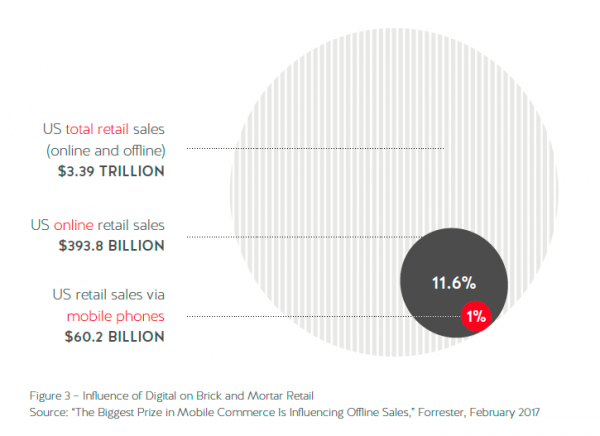Among the major headlines of 2017, many have involved the shifting landscape of retail and eCommerce. Most notably was Amazon’s acquisition of Whole Foods.
These events indicate a digital disruption is afoot – and eCommerce is not immune to its effects. The disruption can’t be ignored. Commerce business models must change to satisfy increasing customer expectations.
In this series, explore the three major areas where you can start innovating to transform your existing commerce business model. We previously looked at re-vamping customer experience. Next, we continue with the importance of delivering omni-channel experiences.
Improving the omni-channel experience
Customers interact with your brand using a variety of devices and channels. The experience you deliver must stand apart from your competitors. More importantly, it must bridge the gap between digital and physical worlds.
“Omni-channel” – as defined by Forrester – is the coordination of traditional channels (marketing, selling, and fulfillment) and supporting systems to create a seamless and consistent customer experience.1
With the digital disruption underway, one prevailing opinion in eCommerce is that brick and mortar is dying. Purchases made through digital channels will undoubtedly continue its rapid, steady growth. But, do these channels translate into 100% of your sales?
This is highly unlikely according to estimates from Forrester. The figure below illustrates the forecasted percentage of online retail sales compared to total retail sales (both offline and online until 2021.)2

Digital channels influence how customers buy today and will continue to do so in the foreseeable future. Yet, how will your business embrace this perspective and apply it to drive organizational change?
Among the well-known department stores, Neiman Marcus states that customers drive its omni-channel strategy. The retailer understands that customers see one brand and don’t differentiate between channels. Neiman Marcus also recognizes the importance of adopting this mindset to operate in a way that aligns with customers’ expectations.
Personalization and fulfillment across touchpoints are among the top challenges to delivering a true omni-channel experience. According to Forrester, a “personalized experience” is one that “uses customer data and understanding to frame, guide, extend, and enhance interactions based on that person’s history, preferences, context, and intent.”3
On the fulfillment side, customers expect you to deliver the product or service in the fastest, most convenient way possible. Coordinating the back end of your fulfillment channels is essential. Recent trends like buy online and pick-up in store indicate the need to deliver your products regardless of how or where the purchase originated.
Choosing the best technology fit for omni-channel
As companies evolve to deliver omni-channel experiences, they share some common goals to create, meet, and exceed customer expectations. You must understand your company’s unique position of strengths, weaknesses, and overall technological maturity to make omni-channel a reality.
Many enterprises often lead technology evaluations directly with potential software vendors. However, when you work with an implementation partner like Perficient Digital, you’ll receive guidance on finding the right technologies that enable customer experience innovations, especially from an omni-channel perspective.
When evaluating technologies, you have to consider:
- Current architectures
- Areas where your CX is effective
- Business goals/objectives and requirements that support customer experience, marketing, merchandising, and promotions
- Short- and long-term investments to sustain and improve the customer experience
Focus on streamlining supply chain fulfillment
Your customers want a seamless, connected experience throughout their journey. How do you bring this to life?
Optimizing supply chain and fulfillment is a good place to start. When you can support global visibility of inventory across your supply chain, then you can enable omni-channel processes such as buy online and pick up in store, ship from a store, or online ship to a store. Access to inventory data extends the abilities of call center agents or in-store sales associates to help customers what they want and arrange for the quickest and most convenient delivery. When you optimize your supply chain and fulfillment, you also enhance reverse logistics or returns from customers.
Rise of cognitive solutions
Emerging cognitive solutions can enhance omni-channel experiences if you have a mature commerce business. These solutions help your business users make better decisions that enhance the customer journey.
Cognitive solutions are unique because of their ability to understand, to reason/form hypotheses, and their ability to learn. They can prioritize omni-channel recommendations. They also possess learning capabilities to enhance, scale, and accelerate the delivery of personalized experiences across all channels.
Learn more about the top areas for innovation by downloading our guide, How to Transform Your Commerce Business Models.
Sources:
1 “Make Omnichannel a Cornerstone of Your Telecom Digital Transformation,” Forrester, March 2017
2 “The Biggest Prize in Mobile Commerce Is Influencing Offline Sales,” Forrester, February 2017
3 “Pivot to Person-First Personalization,” Forrester, April 2017
